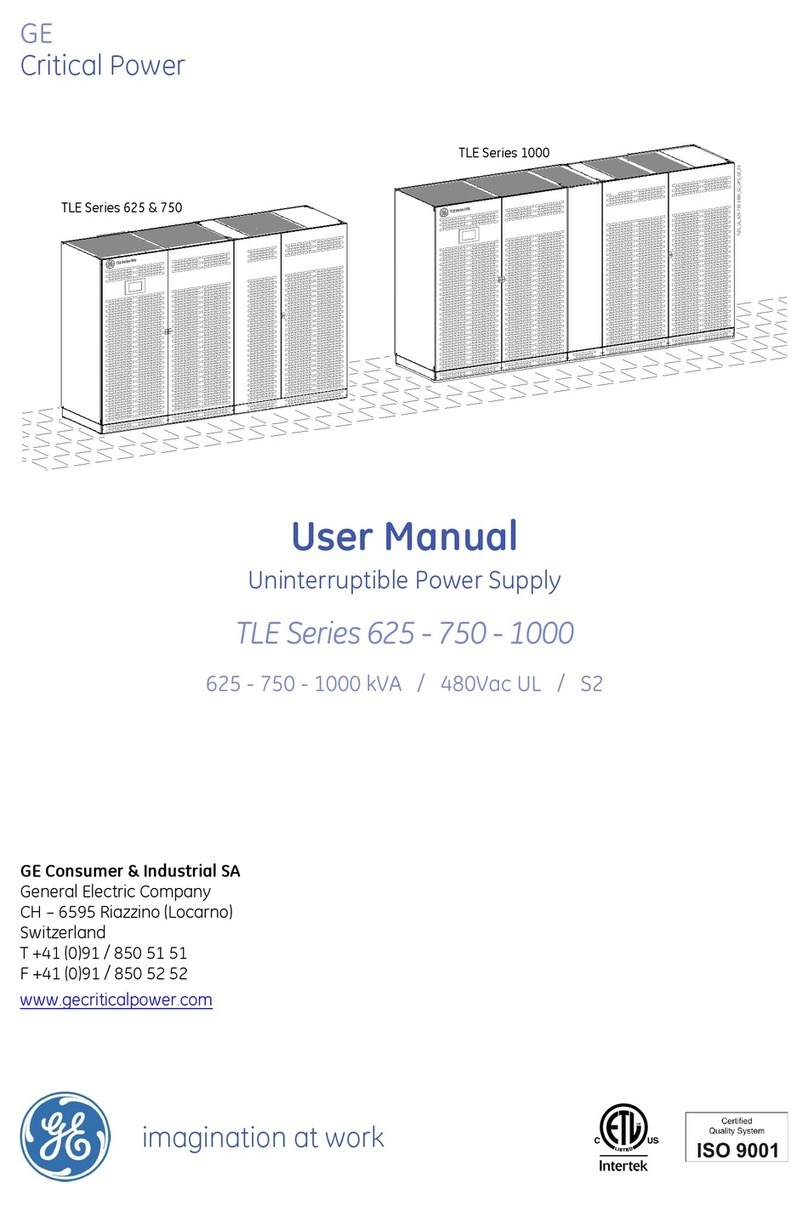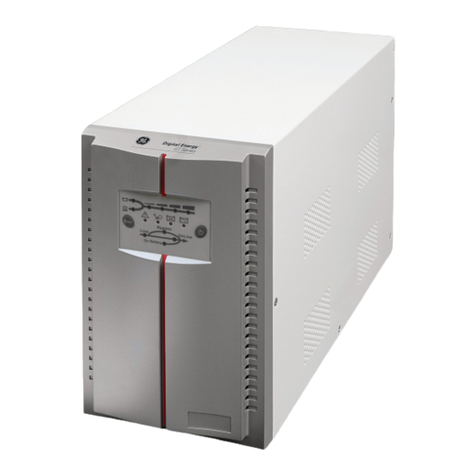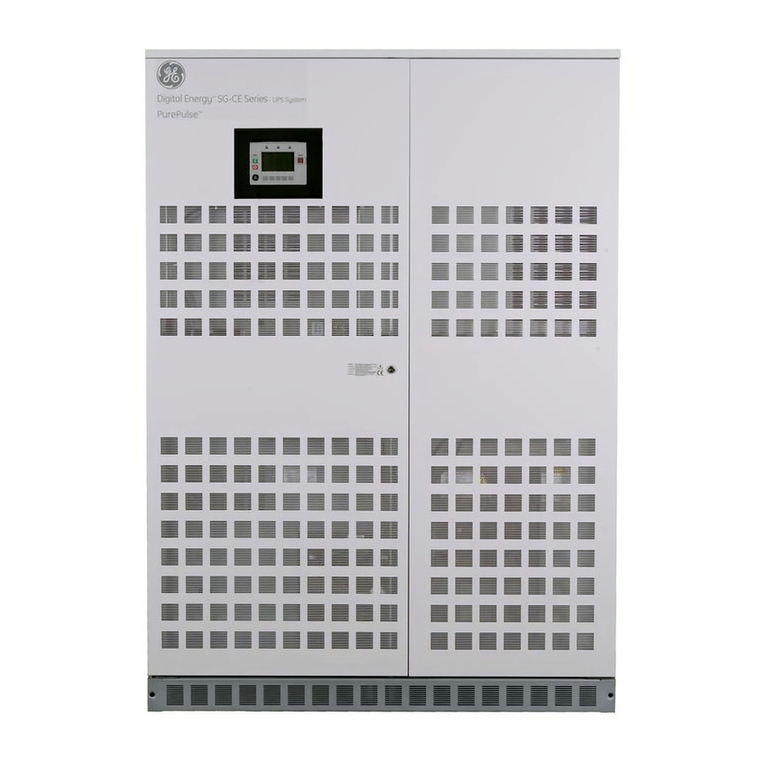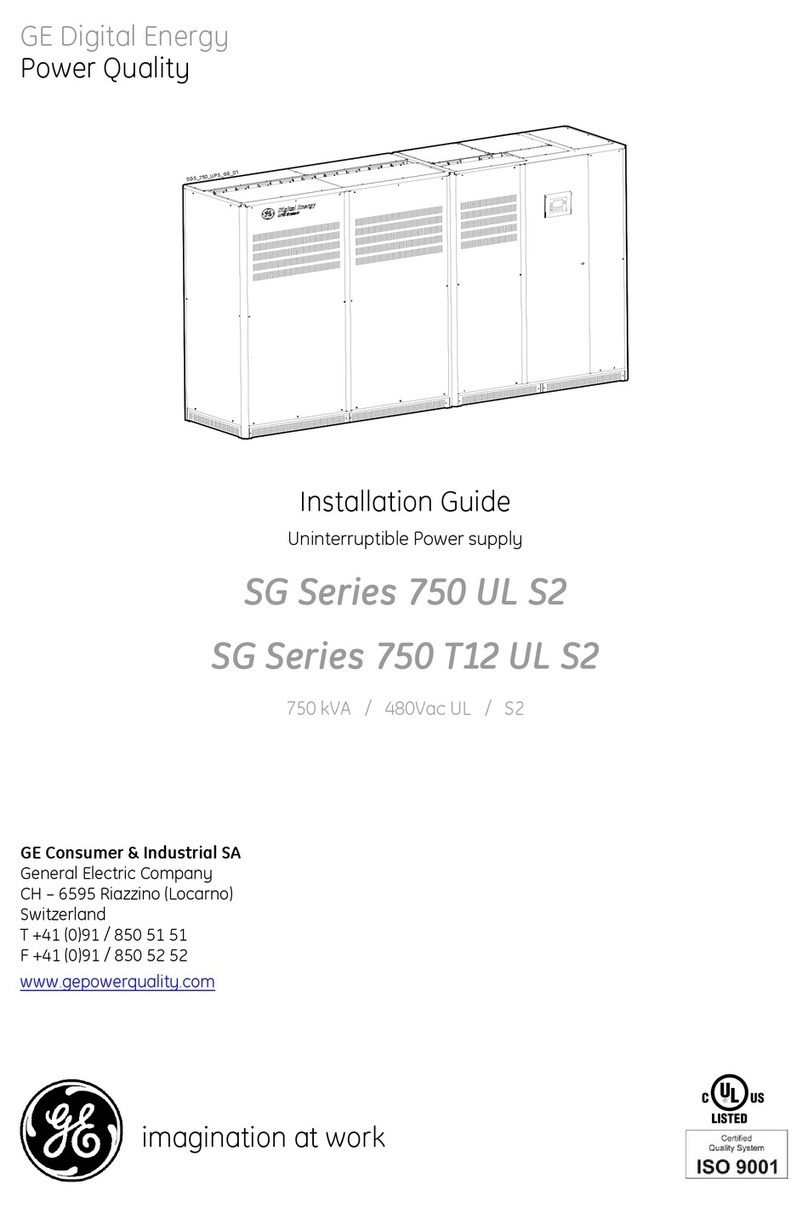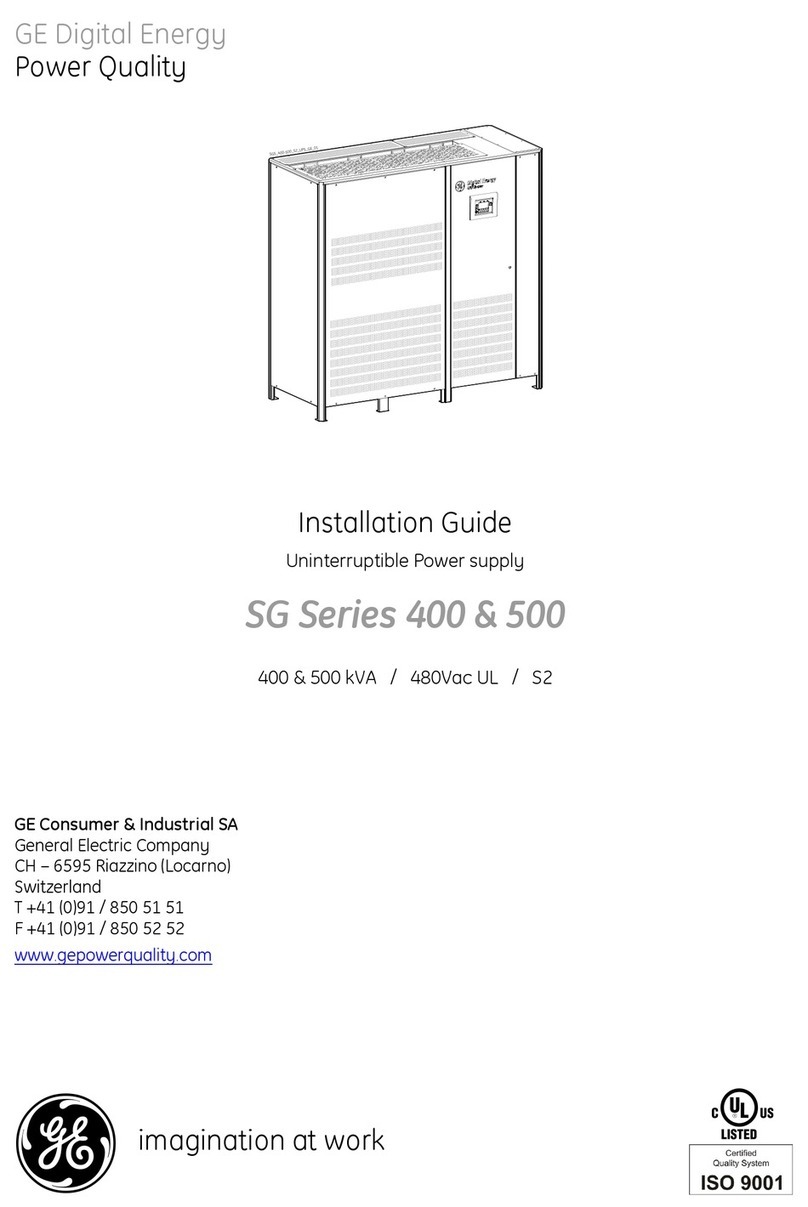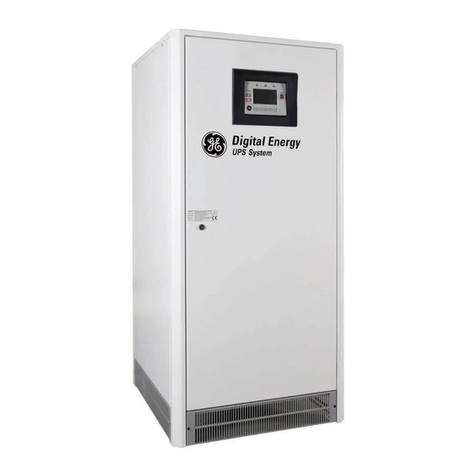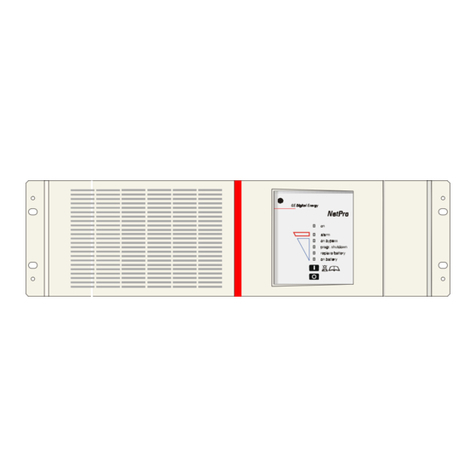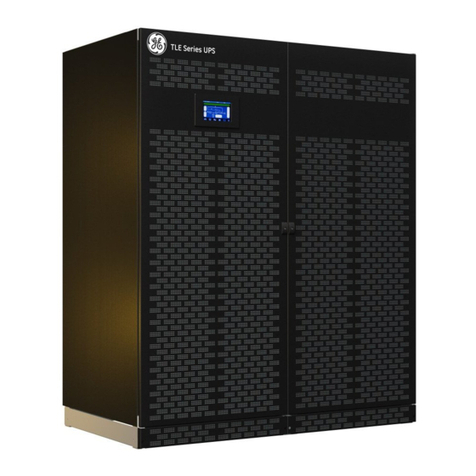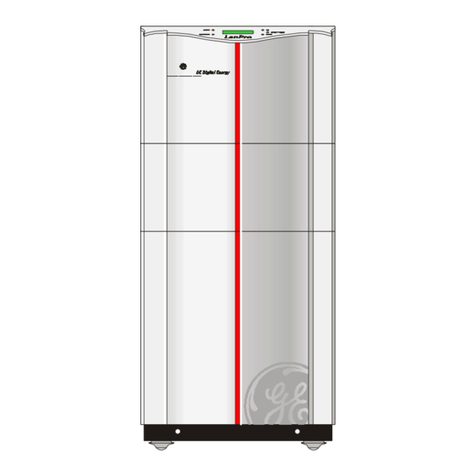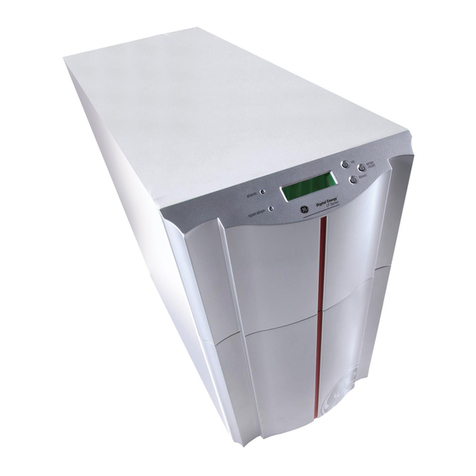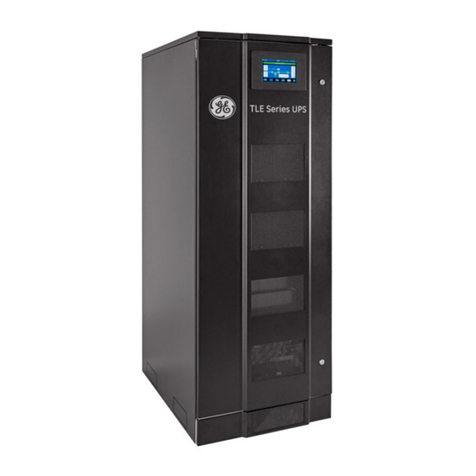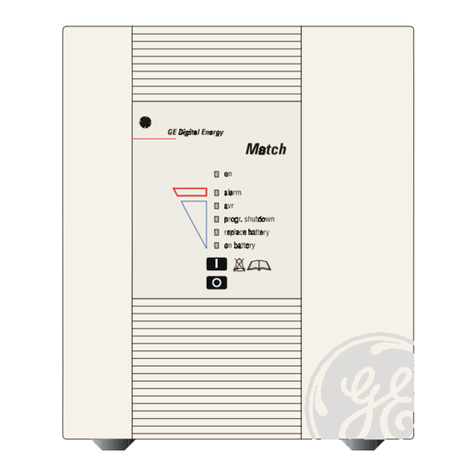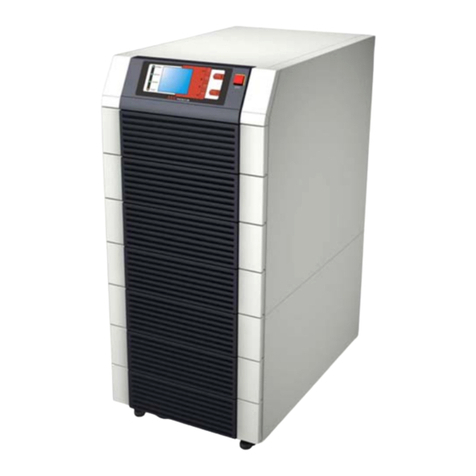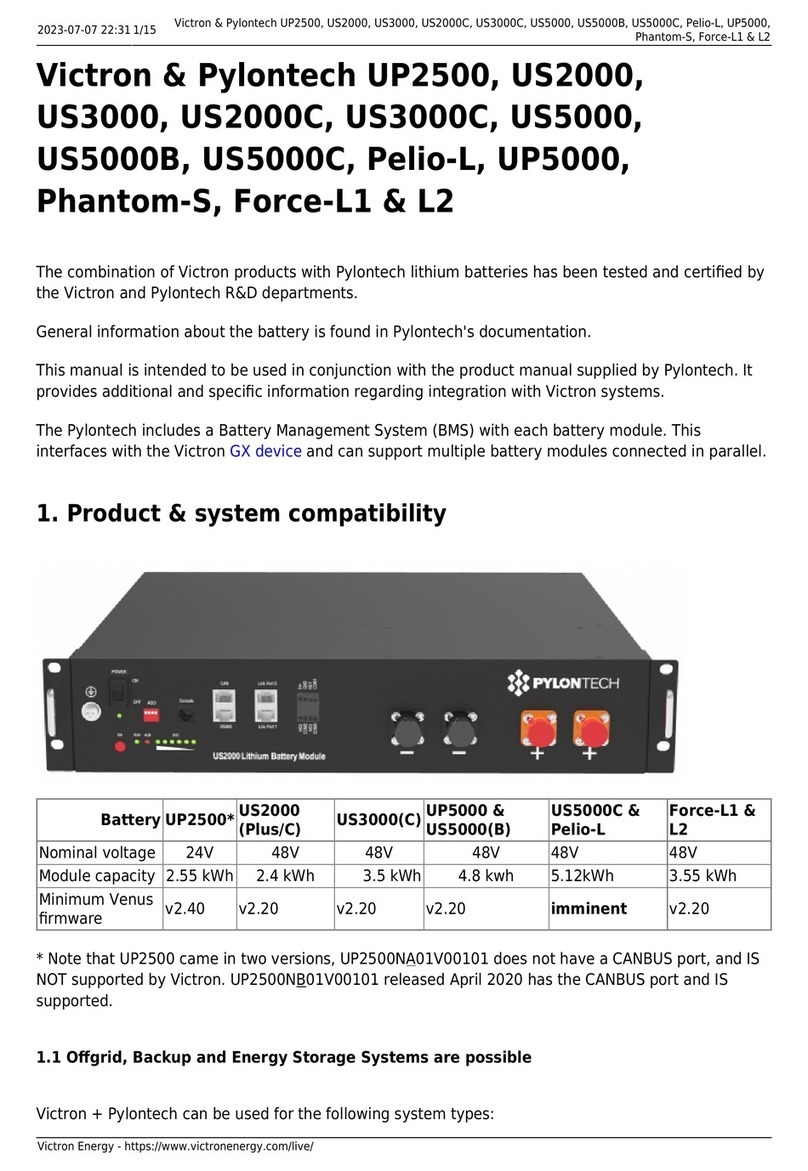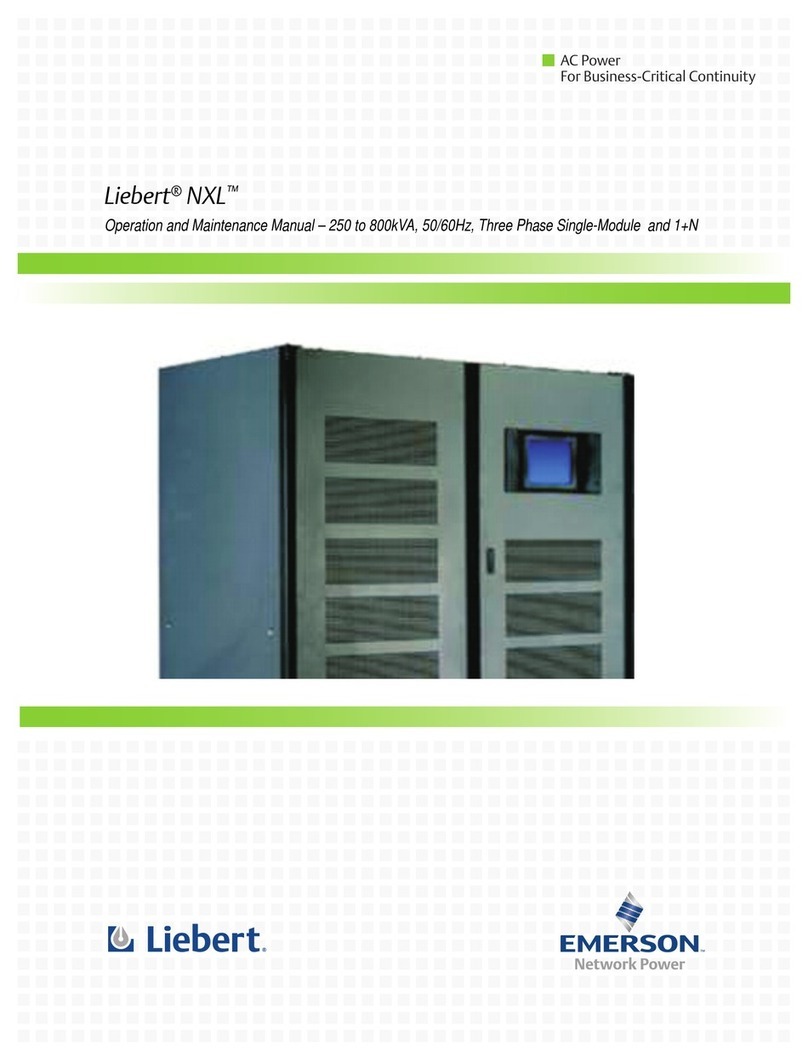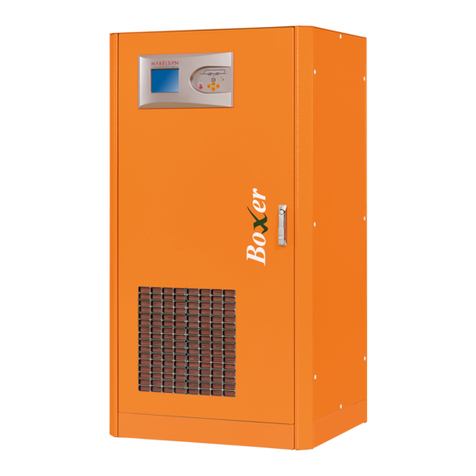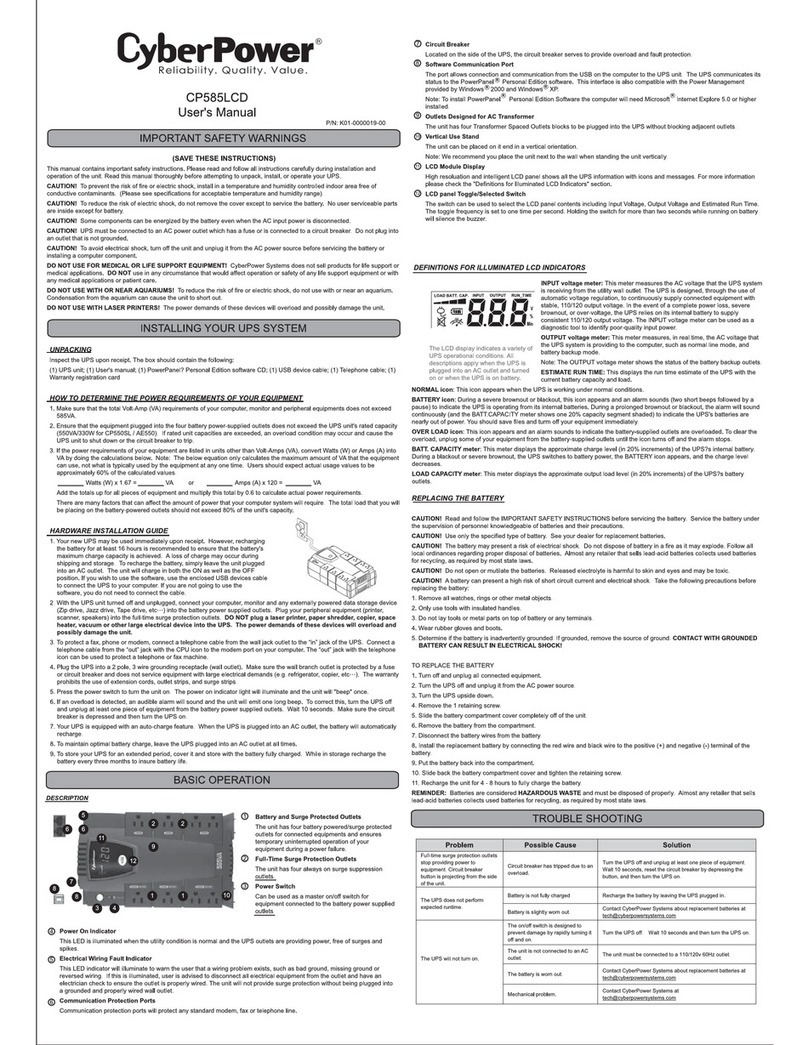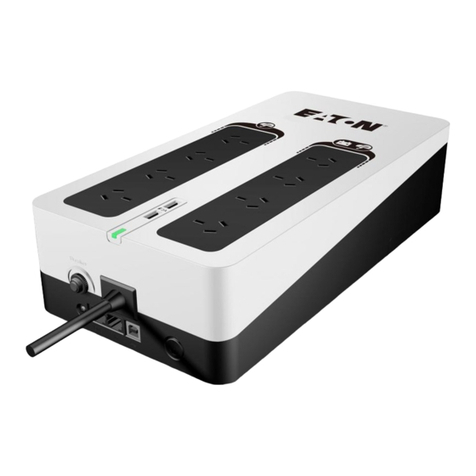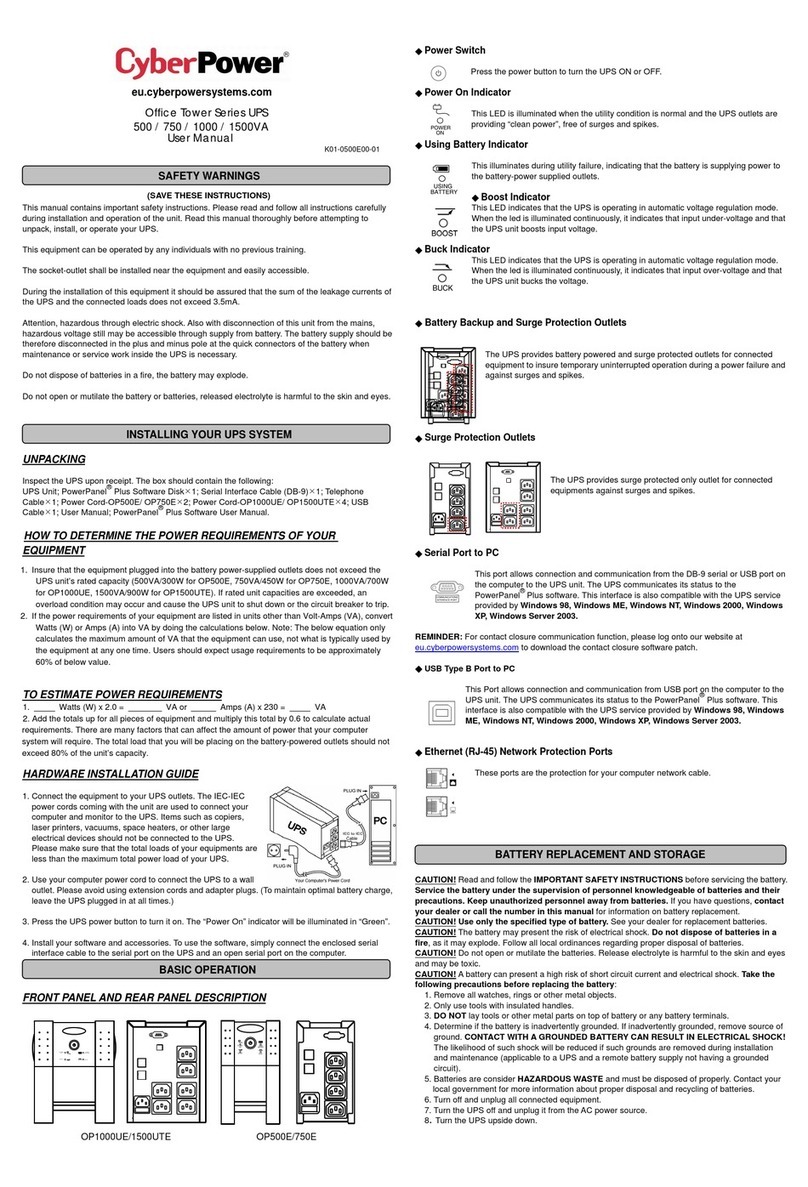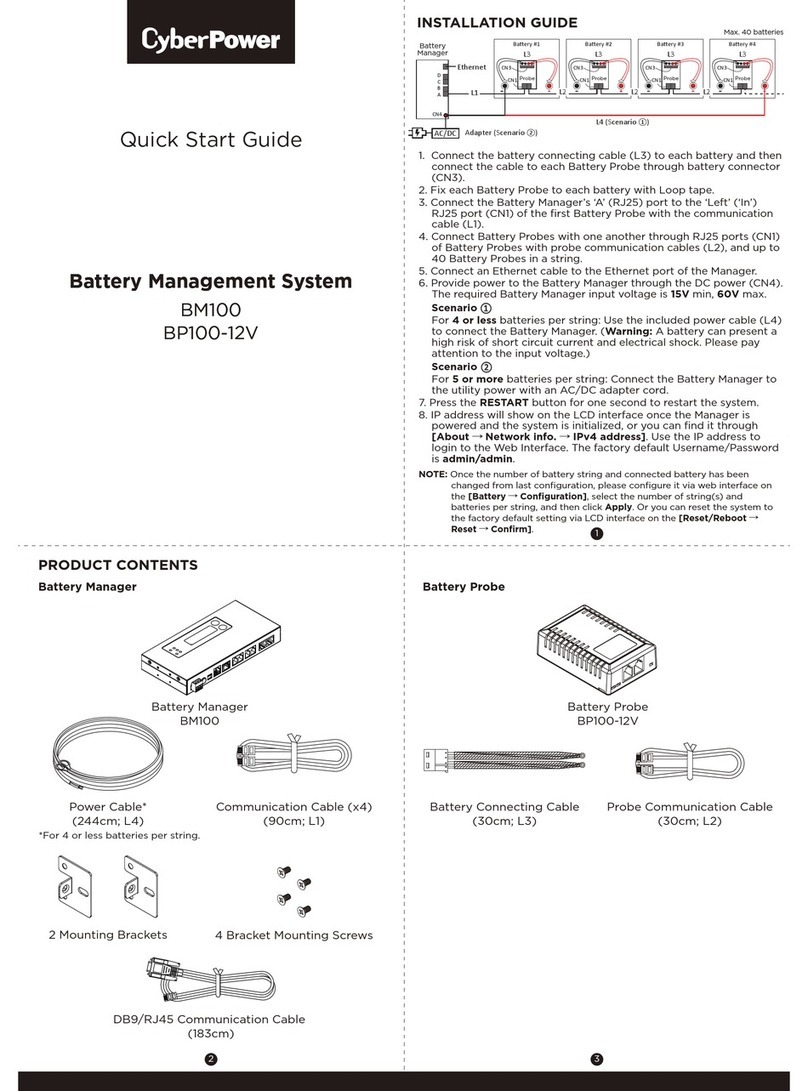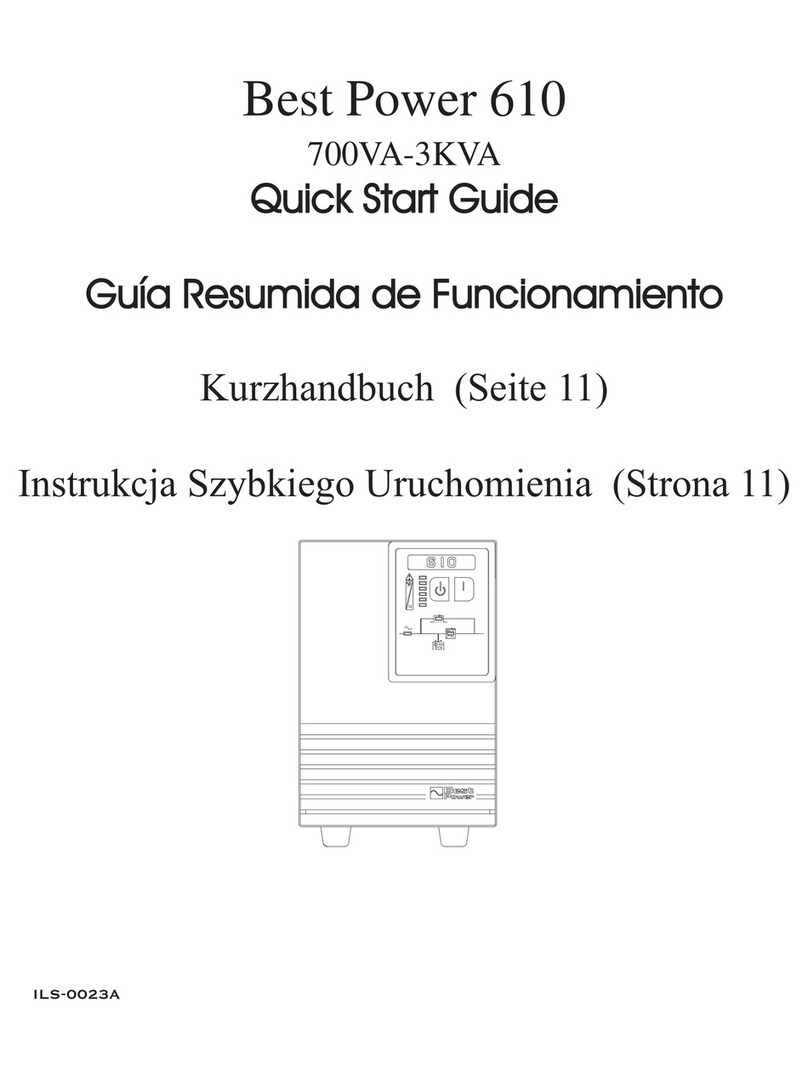
OPM_NPE_XXX_2K0_4K0_1GB_V040 2NetPro 2000-4000: user manual 4.0 (GB)
GE Digital Energy
g
1.1 Introduction
The GE (General Electric) Digital Energy NetPro UPS, a truly on-line uninterruptible power supply,
protects your equipment from all forms of power interference, including complete power failures.
1.2 Safety Rules
!CAUTION: RISK OF ELECTRICAL SHOCK. The UPS contains batteries. The appliance
outlets may be electrically live, even when the UPS is disconnected from the mains.
!The UPS contains potentially hazardous voltages. Do not open the UPS, there are no user
serviceable parts inside.
!All maintenance and service work, including replacement of the batteries, should be
performed by qualified service personnel.
1.3 Transport / Storage
!No liability can be accepted for any transport damage when the equipment is shipped in non-
original packaging.
!Store the UPS in a dry location with the batteries in a fully charged state. Storage temperature
must be within -20 +45 "C. If the unit is stored for a period exceeding 3 months, optimal battery
lifetime is obtained if the storage temperature does not exceed 25°C.
!If the unit is stored for an extended period of time, the batteries must be recharged periodically.
Connect the unit to a wall outlet and recharge the batteries for 24 hours:
- if the storage temperature is within -20 and +30°C: every 3 months,
- if the storage temperature is within -20 and +45°C: every month.
The shipping box contains a NetPro UPS, two IEC male-female power cords, a data cable, a CD ROM
and this manual. Inspect the UPS for damage after unpacking. If any damage is present please
immediately notify the carrier and place of purchase.
IMPORTANT:
Before making any connection and switching on the NetPro UPS, please check the following
conditions:
!your mains supply is 220 - 240 Volts and 50 (if the mains frequency is 60Hz, the output frequency
of the UPS can be changed, see section 3.4), and
!the total power demand of the connected equipment does not exceed the rated output power of
the NetPro UPS (indicated on the rating label) (6, fig. 1).
WARNING
Connecting the UPS output to neutral or ground will result in a malfunctioning UPS, unless your
unit is a "NetPro+", i.e. equipped with an isolation transformer.
2.1 Installation Rules
!The UPS is intended to be used in normal domestic and office situations.
!Protect the UPS, according to the wiring rules, with a 16A (NP 2000/3000VA) or 25A
(NP 4000VA) D-type fuse.
!The UPS must be powered from a single phase wall outlet equipped with protective earth. Do not
use extension cords.
!Avoid locations that are excessively humid, near water, near heat sources or in direct sunlight.
!The ambient temperature should not exceed 40"C. Optimal battery lifetime is obtained if the
ambient temperature does not exceed 30"C.
!It is important that ventilation air can move freely around and through the unit. Do not block the air
vents.
!Do not plug appliances such as electric heaters, toasters and vacuum cleaners into the UPS.
!Be careful when connecting laser printers: be sure that the demanded power does not exceed the
capacity of the UPS.
!The sum of the leakage currents of the UPS and the connected loads should not exceed 3.5mA.
1 - Introduction
2 - Installation
